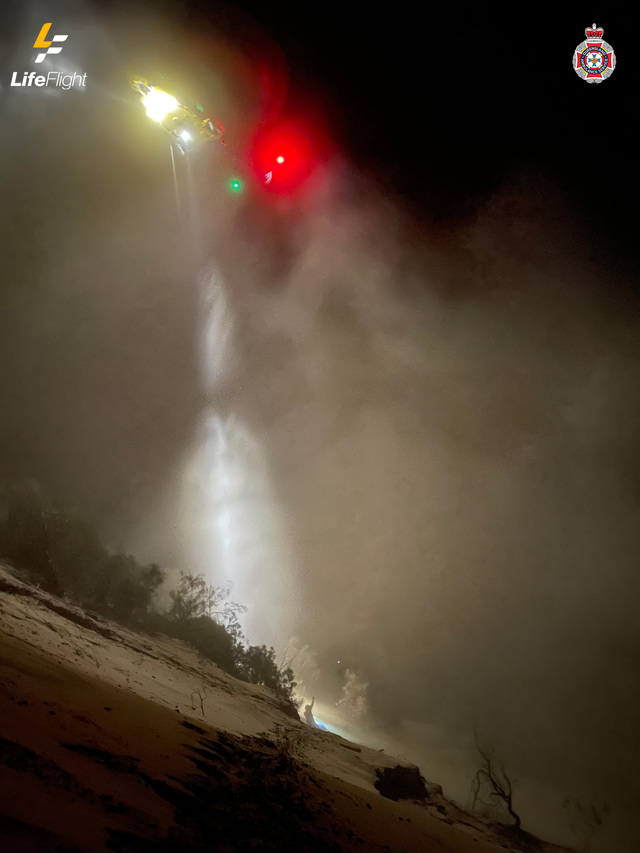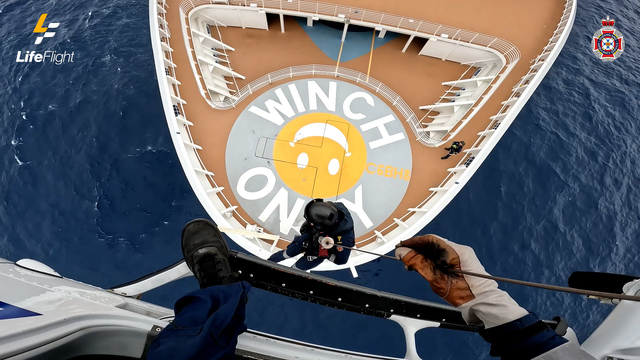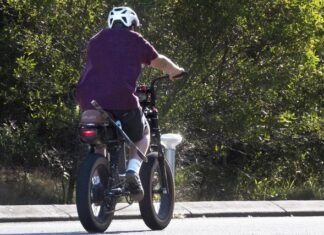The LifeFlight Sunshine Coast aeromedical crew rescued paragliders, skydivers, water skiers and boaties in a bumper year where the organisation marked multiple milestones.
The helicopter crew helped 569 people in 2024, up 2.15 per cent on 2023, and continued a trend of year-on-year growth for the Sunshine Coast base.
The helicopter clocked up 938 flight hours and attended a diverse range of incidents.
They included helping 101 people in the wake of motor vehicle crashes, 72 people with cardiac problems, 10 people injured by animals, and five people found following search and rescues.
Statistics released this week show the Sunshine Coast numbers helped fuel another record year for LifeFlight, with 8,477 people helped over the course of the 12 months.
The figure was 13 per cent higher than 2023 and more than any other year in the not-for-profit’s history.
In November, construction began on a new $18.5 million Sunshine Coast base, which will accommodate two AW139 helicopters and one Challenger 604 jet and is close to three times the size of the current hangar.
LifeFlight Chief Operating Officer Lee Schofield, said the Sunshine Coast crew attended a highly diverse range of emergencies in 2024.
“Our aeromedical crews can be tasked to everything from motor vehicle crashes, farming accidents to search and rescues, all in the one day,” Mr Schofield said.
“It is why our crews are trained to handle all eventualities and are adept at handling complex missions.
“Queensland’s strong population growth combined with our expanded capabilities mean we are called on more to help Queenslanders whenever and wherever we are needed.
“It is why we are investing in new training programs, AW139 helicopters and bases in the regions where we operate.”
He said this year LifeFlight would also expand its free First Minutes Matter trauma training workshops across the state.
“This is an important step in improving community resilience, especially at a time when the number of patients needing help grows year on year,” Mr Schofield said.
LifeFlight Chief Medical Officer Dr Allan MacKillop, said aeromedical crews were ready to help with a vast range of medical emergencies in some of the remotest parts of the state.
“Our medical staff undergo intensive aeromedical training at the LifeFlight Training Academy, including Helicopter Underwater Escape Training (HUET), rescue winching and clinical scenario training, so they are ready for any eventuality,” Dr MacKillop said.
“They can be called out to administer emergency medicine under the most trying circumstances, such as wild weather, or the aftermath of a multi vehicle accident.
“It is why our helicopters are fitted out as mobile intensive care units with specially designed medical equipment for life-saving care, whether that is operating 35,000 feet above the ground in a Challenger jet or in the back of a helicopter.
“This aeromedical intervention is critical, significantly increasing a patient’s chance of survival, so it is vitally important.”
LifeFlight’s helicopter crews, operating from bases on the Sunshine Coast, Bundaberg, Mount Isa, Toowoomba, Roma, and Brisbane, clocked up 3,534 missions in 2024, which included airlifting injured motorists, patients with cardiac problems, seafarers, hikers, and farmers injured by animals.
The number of missions was 24 per cent higher than 2023 while flight hours also increased by 20 per cent to 5,551.
As in previous years, much of LifeFlight’s aeromedical work involved Inter-Facility Transfers (IFT) or moving patients between medical facilities. This ensures all communities have equal access to the best possible healthcare, no matter where they live.
LifeFlight has helped more than 90,000 people since first taking to the skies in 1979 on the Sunshine Coast.








